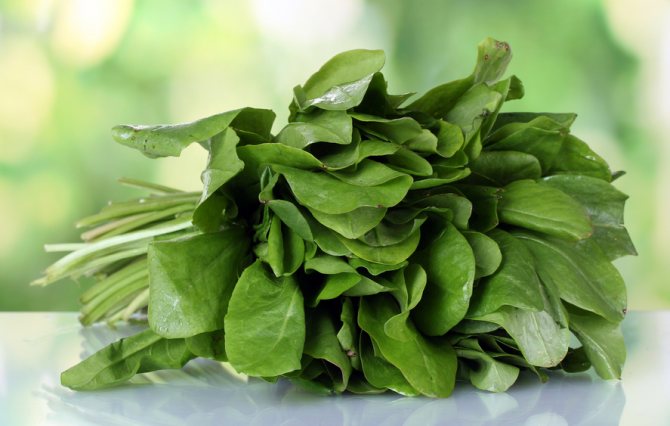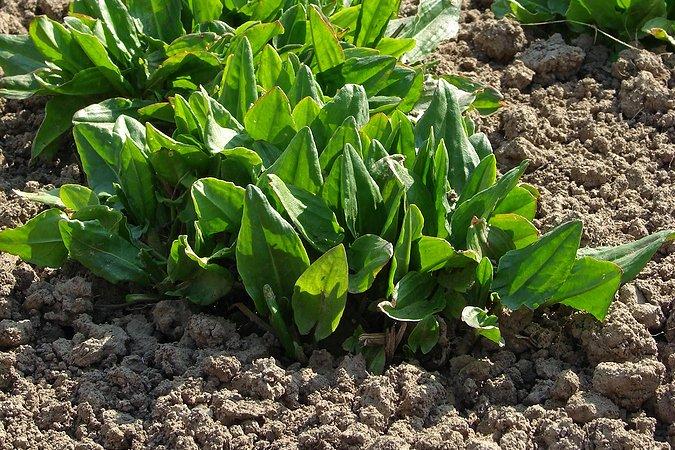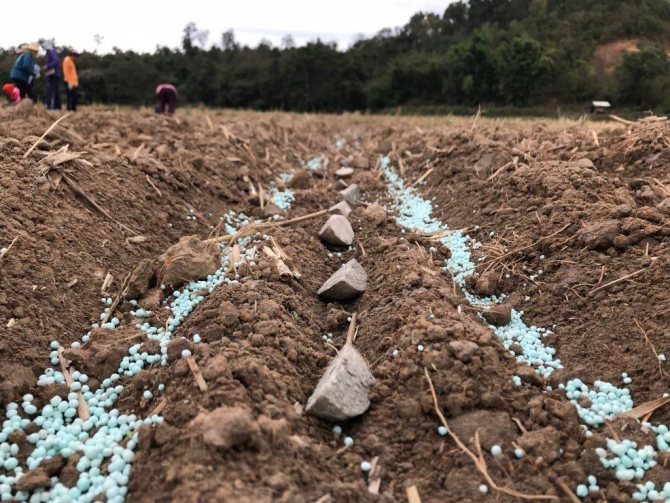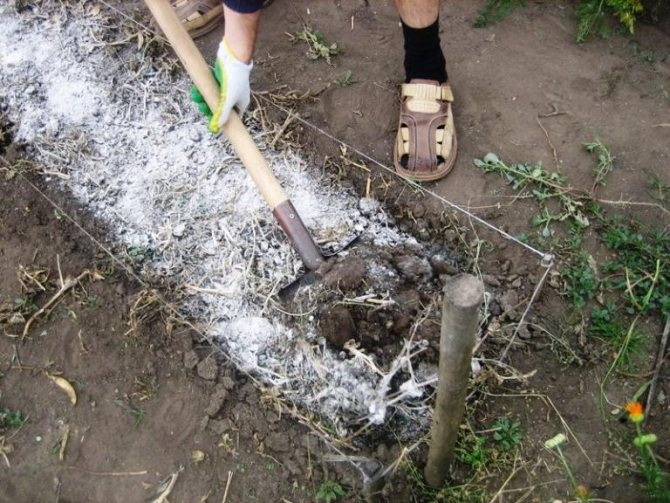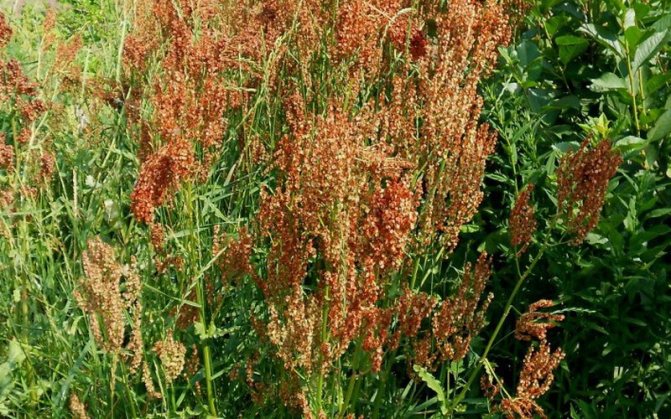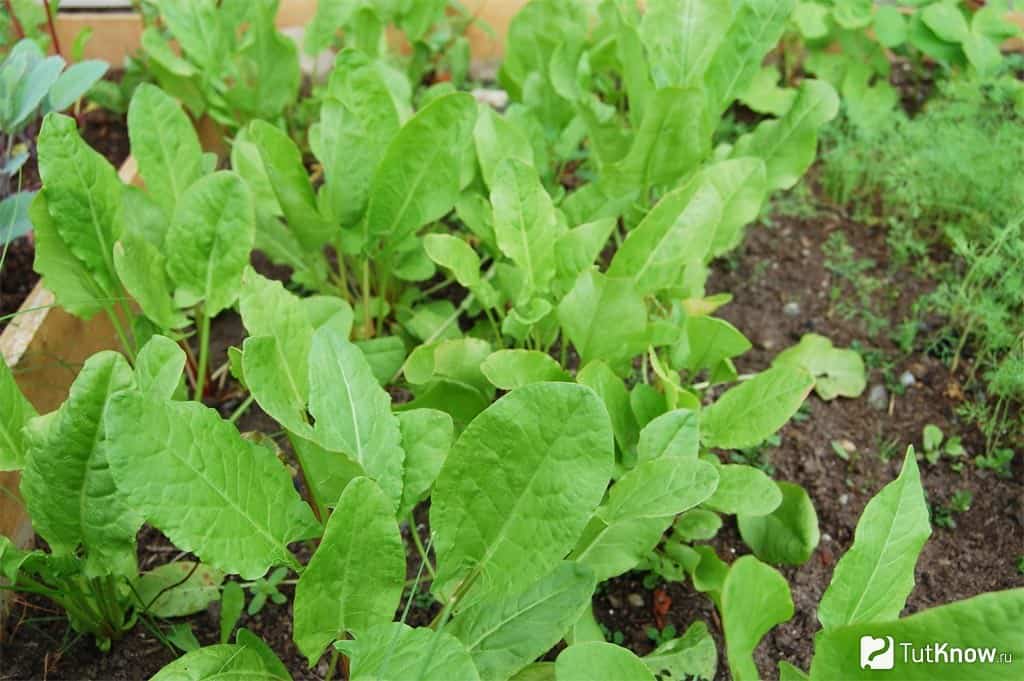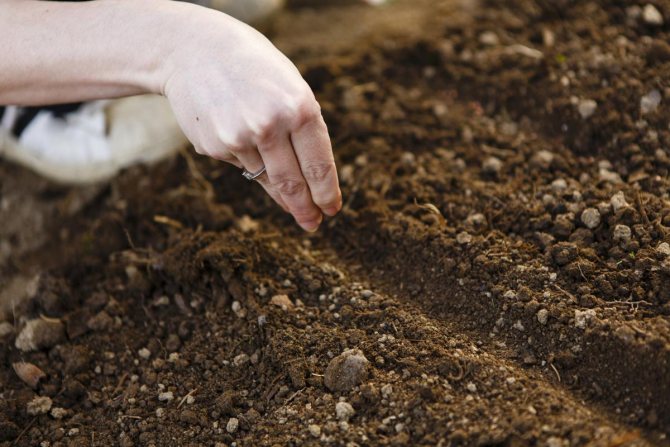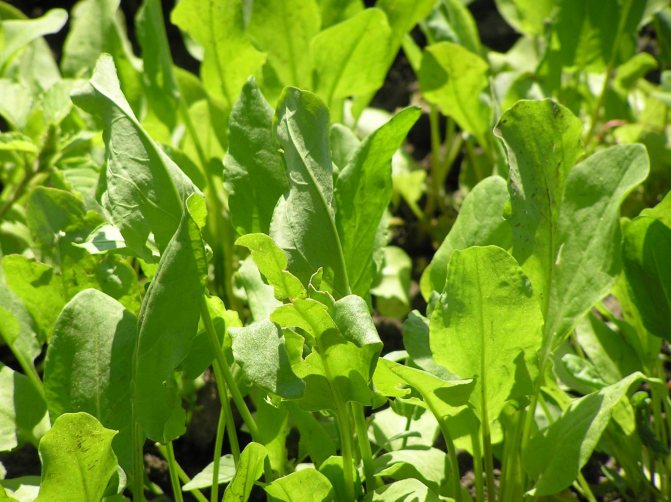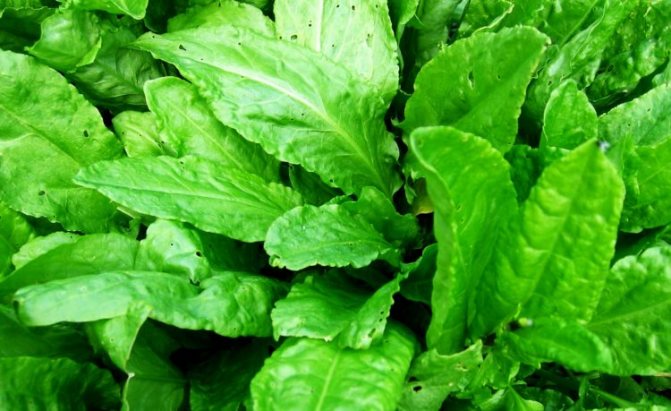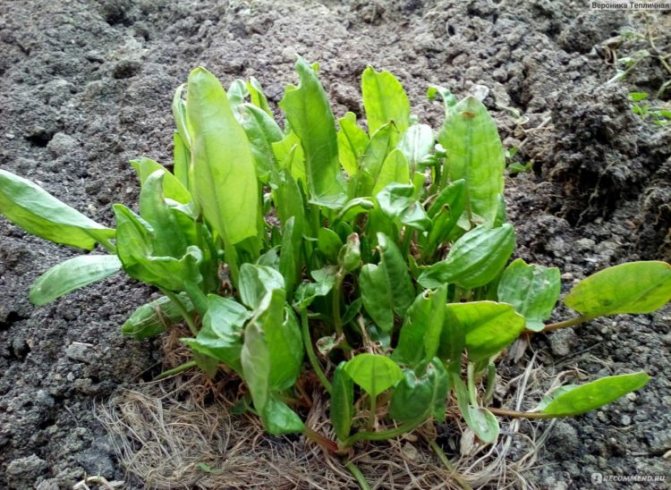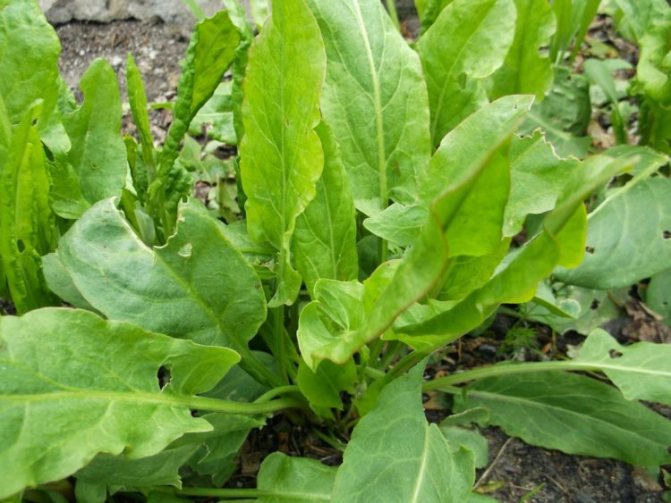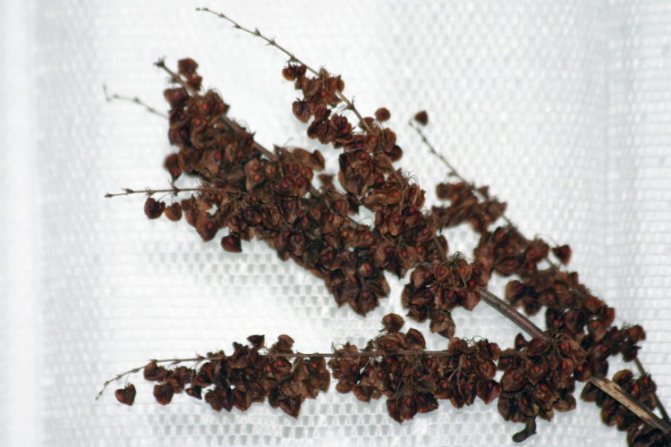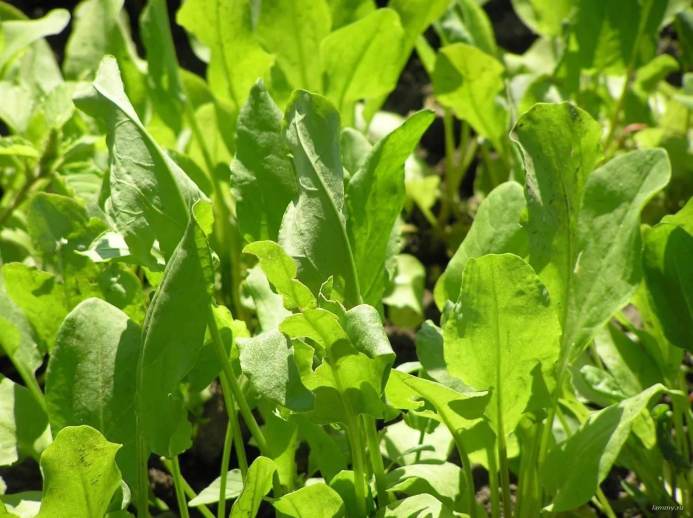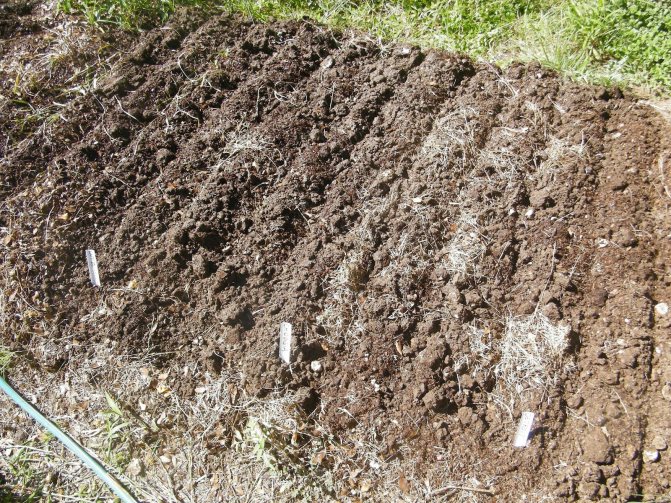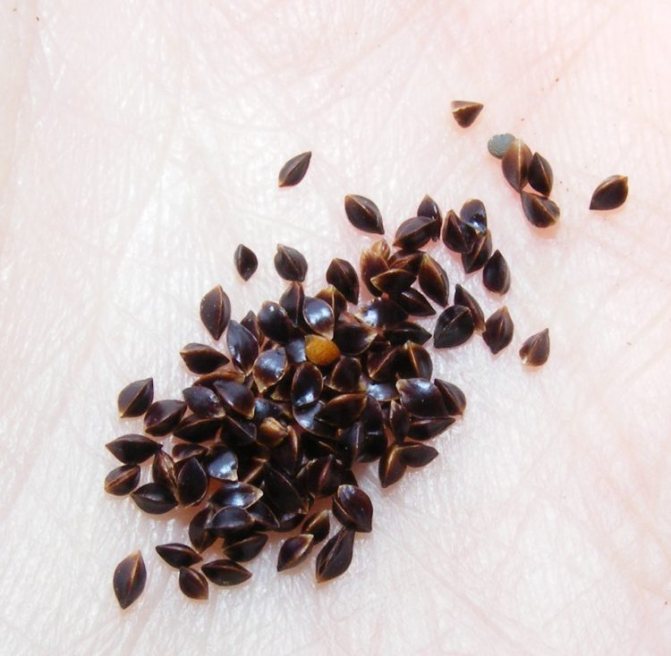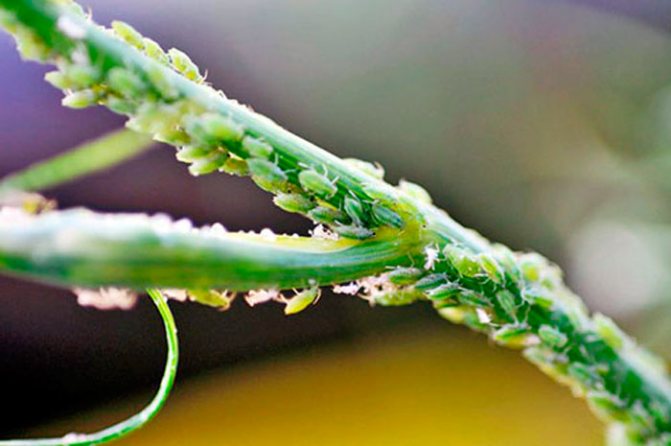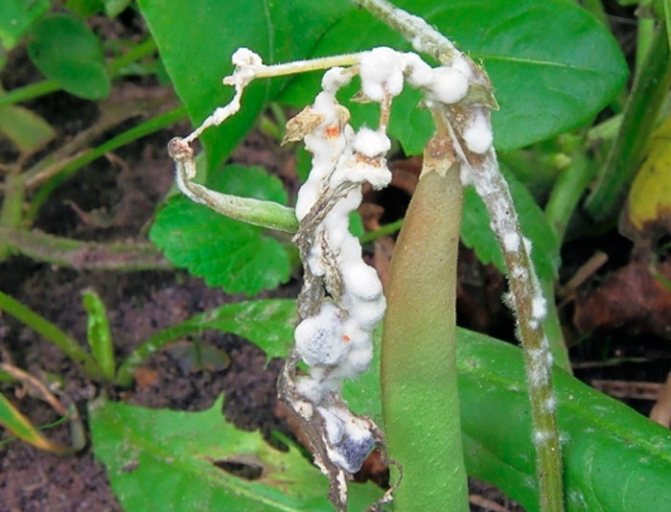Sorrel is one of the most popular perennial crops in summer cottages and vegetable gardens. Gardeners love it not only for its excellent taste and undemanding care. Its leaves contain a large amount of vitamins (A, B, C and PP), minerals and useful acids (citric, malic and, of course, oxalic). The presence of the latter is reflected in the special sourness, which is in the green sorrel.
Young shoots of sorrel are used for making various soups, salads and baked goods. Green bushes of the plant appear in early spring as soon as the snow melts. In the Moscow region, the first crop of sorrel can be harvested from the beginning of May.
When to sow sorrel outdoors
The plant can withstand the influence of cold. Its seeds begin to germinate at a temperature of +3 ° C. Do not pre-grow seedlings, planting material can be sown directly into open soil. As for the timing of sowing, planting can be carried out in early spring, summer and before winter.
In the spring, you can start sowing when there is an opportunity to cultivate the land. It will be possible to harvest the crop this season.
Summer sowing can be done after harvesting vegetables, which are characterized by early ripening, is completed. The plant will have time to reliably root before the arrival of winter.
Care features
The most important aspect of caring for sorrel is watering it. The taste of the plant and the richness of the crop depend on how correctly it is organized. It is necessary to provide the culture with sufficient moisture. With a lack of it, a large amount of acid will accumulate in the leaves, and they will no longer be edible. Lack of water causes the plant to prematurely release arrows with inflorescences, which also leads to loss of yield. Watering can be done with cold water from a hose.
We suggest that you familiarize yourself with:
- We grow lychnis from seeds
- Papaver or simply poppy: features of peony varieties
- How to grow a large Astrantia outdoors
- Nerine: unusual flowers for the garden
- Planting and caring for Kampsis in the Middle Lane
Other features of crop care include periodically loosening the soil around the bushes, killing weeds, and removing the arrowheads with inflorescences. After a massive harvest, it is recommended to feed the plant with infusion of mullein or herbs. In the fall, it is necessary to trim the foliage and cover the bare roots.
How to plant sorrel seeds
During sowing, the distance between the rows, which is 15-20 cm, should be adhered to. If planting is carried out in spring, the seeds should be laid to a depth of 1 mm. The first shoots can be seen after 8-11 days. To speed up the emergence, the crops can be covered with foil. After 7 days from the start of growth, it is necessary to thin out the beds. The distance between them should be 5-7 cm.
For summer sowing, the soil must be saturated with moisture. To do this, a few days before planting the seed, the bed should be watered abundantly with water. So the earth will settle slightly, and the seeds will not be washed off by rainwater deep into the earth.
Sowing is rarely necessary. Seeds sprout quickly, the first shoots need to be thinned out.It is best to leave gaps (2-3 cm) between the plants. This will ensure that the plant will grow large and juicy. Care and cultivation of sorrel in the open field
Watering this crop is carried out taking into account certain recommendations:
- During the active growth of the plant, it must be watered abundantly and regularly.
- If the weather is hot and the soil lacks moisture, the ground part will develop rapidly, which will lead to unwanted flowering. Under normal conditions, it can be expected in the second year of growth. In order for the sorrel to be of better quality, the peduncles must be eliminated.
Growing methods in the Moscow region
On the territory of the Moscow region, you can grow sorrel greens in three ways:
- Outdoors.
- In the greenhouse.
- On the windowsill.
The most common method is considered to be cultivation in areas in the open field. The culture is cold-resistant and capable of wintering without additional shelter. However, an earlier harvest can be achieved in the greenhouse. When sowing sorrel on the windowsill, you need to take care of good lighting and timely watering.
Top dressing and mulching
With the arrival of early spring, the soil should be loosened and mulched. Such measures will help preserve nutrients in the soil and will maintain an optimal level of moisture in it. Then the soil must be fertilized with a mixture of mullein solution (1: 6) and potassium-phosphorus fertilizers (10-25 g). This amount of composition is taken for 1 m².
To maintain the yield, after each cutting of the leaves, it is advisable to apply complex mineral fertilizers to the soil. Particular attention should be paid to the content of nitrogen. In the fall, 4-5 kg of humus or compost must be added to the places between the beds.
It is permissible to cultivate this culture in one place no longer than 4 years, after which the planting must be renewed.
Description of the growth process
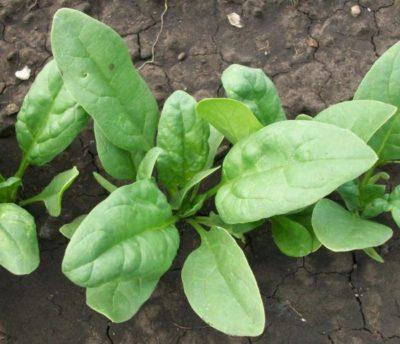
Sorrel belongs to early green cold-hardy crops. It has a powerful root and long leaves gathered in one rosette. The culture is sown early, as it sprouts even at a temperature of 2 degrees. It develops well at temperatures up to 230 C.
It is advisable to plant after:
- cabbage;
- early potatoes;
- carrots;
- parsley;
- beets.
They grow in one place for 3-4 years. In the fifth year, the leaves become coarse, crushed, the yield decreases, so transplantation to another place follows. It blooms in the second year of life. The peduncles are removed so that the sorrel leaves do not become coarse and the taste does not deteriorate.
Sow in rows. The beds are made about 1 m long, a distance of 20 cm is left between the rows. The seeds are planted to a depth of 1 cm in wet soil in a dry form. After emergence, the soil is thinned and loosened. When the beds are covered with a film, seedlings appear after 5 days.
The speed of the process and what does it depend on?
In the first year, sorrel is harvested 2.5-3 months after sowing or 45 days after sprouting, in the second year, the harvest is harvested in May.
The growth of culture is positively influenced by:
- correctly selected sowing site;
- sufficient watering without waterlogging;
- fertilizing with fertilizer;
- elimination of weeds;
- seed variety.
How does it depend on the variety?
The quality of the crop and the ripening time are influenced by the sorrel varieties. Early ripening and popular varieties:
- Large-leaved one gives the earliest harvest, tolerates low temperatures well, is frost-resistant, soil acidity does not affect growth.
- Malachite yields a harvest in 50 days, young leaves grow quickly.
- Belleville gives an early and large harvest, it is afraid of frost.
- Shchi-borscht pleases with an early harvest, 35 days pass from germination to the first cut.
- The vegetarian gives an early harvest, 35-40 days pass from germination to the first cut.
Breeding methods and growing locations
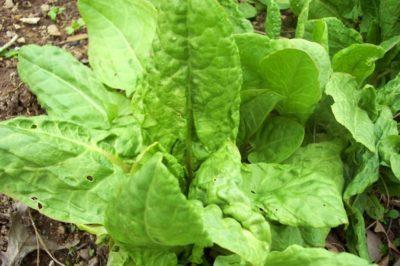

Sorrel is propagated by seeds. At the end of the growing season, to obtain seeds, flower shoots are left on 10 plants of the second year of growth.They serve to update the fit.
To get a good harvest, they choose the right place for sowing in the fall. It should be:
- calm;
- with moist soil, but no stagnant water;
- with fertile loamy or sandy loam soil;
- shaded, with partial sunlight;
- with humus;
- with soil acidity 4.5-5.
Groundwater should be at a depth of at least 1m from the soil surface. In wetlands, the beds are raised. Before planting, they dig up the area and remove the weeds. 2 square meters is enough to get a good harvest. The land is prepared in the fall: it is dug up, fertilized with humus and ash.
When does it yield and why?
When to plant correctly: what time of year to sow and what month to expect the harvest? The harvest time depends on the sowing time. Sowing is carried out in early spring to late autumn:
- In the spring they are planted (in April) after warming up the land, in which there is a lot of moisture (if the soil is not black soil). Harvest in the summer.
- In summer (June) they are planted for harvest next spring.
- At the end of autumn (October-November), sowing is carried out on sandy soils to obtain a harvest next year, so that the seeds do not have time to germinate before frost and die.
The benefits of sorrel
Sorrel is a source of minerals in the form of potassium and iron. It contains proteins, sugars, organic acids, vitamin C and carotene. This plant is widely used in folk medicine. It is used as a diuretic and hemostatic agent. The sap of the plant has an antiseptic effect, normalizes metabolism, the work of the digestive tract. It is necessary to resort to its use for the purpose of therapy with extreme caution, because it is rich in acids that can negatively affect the work of the kidneys.
In cooking, sorrel is used for cooking dishes and sauces. This plant is considered the main component of such a famous dish as "green borscht". Does not lose its beneficial properties in any form (canned and fresh).
Photo
Next, we suggest looking at the photo of how the culture is growing.
Choosing a place for planting and preparing the garden
The cultivation of any plant in the country begins with the selection of the right place. In order not to be mistaken with the choice, before you start preparing the site, decide on the conditions that the sorrel needs for good growth.
Sorrel quickly emerges and grows without any problems in areas that:
- located not in the brightest sun, but in partial shade;
- have a well-loosened nutrient soil, while sorrel is not afraid of acidic soil and grows well on loam;
- are not blown by cold winds;
- are not located in lowlands, since sorrel does not tolerate moisture stagnation near the roots.
Based on these requirements, you need to prepare the garden, and this is done in the fall. After choosing a suitable site, do the following:
- for a start, just dig up the soil and try to remove all the roots of the weed from there, so that next year there will be less unnecessary weeds;
- add more organic matter to the soil in the garden bed - peat, humus, manure or just compost, and mix it thoroughly with the ground;
- add a little superphosphate there, and leave the garden to winter in this form;
- in the spring, carefully dig up the soil again, and add urea and quite a bit of ammonium nitrate to the bed right before sowing, you can even on the same day. Level the surface of the bed with a rake;
- spill the landing site thoroughly.
That's it, your garden is ready to receive seeds. Please note that sorrel germinates better in warmed-up soil, so there is no need to rush to plant seeds, or they will have to be covered with foil. However, the seeds will germinate even if they are planted from barely thawed ground, but in this case, the seedlings will have to wait longer. Sorrel is considered a cold-resistant crop and winters outdoors.
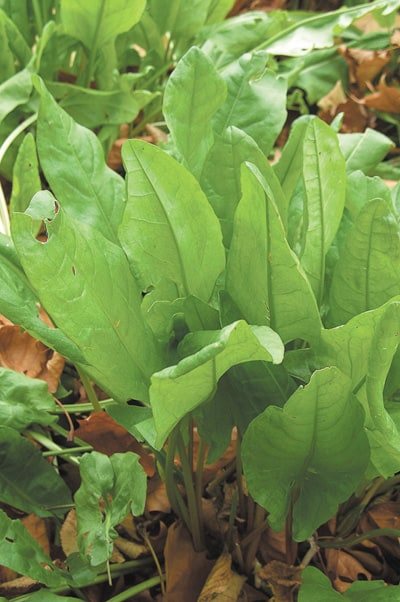

Sorrel - properties and contraindications
The healing properties of sorrel
The greatest value of sorrel as a garden crop is that it produces greens in the spring, when there are very few fresh vegetables. Sorrel greens contain proteins, carbohydrates, organic acids, fiber, vitamin C (ascorbic acid), E (tocopherol), A beta-carotene), K (phylloquinone), H (biotin), PP (niacin) and B vitamins: thiamine , riboflavin, pantothenic and folic acid, pyridoxine. In addition, sorrel is a source of potassium, calcium, magnesium, chlorine, sulfur, phosphorus, sodium, fluorine, copper, zinc, iron, manganese and iodine.
- Cabbage plants: fruit and ornamental
Horse sorrel root contains vitamin K, essential oil, resins, iron, tannins, flavonoids, organic acids, such as coffee and oxalic acids, and other substances necessary or important for the human body. In terms of chemical composition, horse sorrel is close to such a valuable plant as rhubarb.


Young sorrel leaves, which contain malic and citric acid, are more nutritious and useful. Sorrel leaves have a wound healing, analgesic, antiscorbutic, anti-inflammatory, antitoxic, astringent effect and improve digestion.
A decoction of the leaves is used to treat indigestion. It, having a choleretic effect and antiallergic effect, improves liver function, helps to cope with acne and itchy skin.
Sorrel is used for menopause and painful periods: 1 tablespoon of dry leaves is brewed with a glass of boiling water, infused for an hour and drunk 1/3 cup three times a day half an hour before meals.
With infertility: Pour 1 tablespoon of sorrel with a glass of boiling water, boil over low heat for 1 minute and insist until the broth cools. Take the infusion in the same way as with menopause, but if you add mummy and knotweed to the sorrel grass, the effect will be stronger.
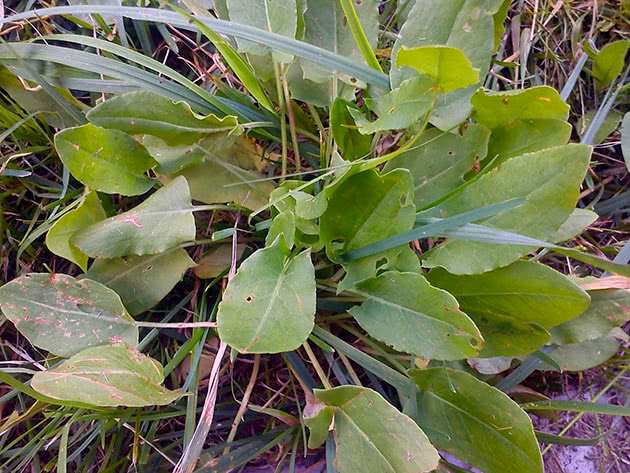

In the photo: Sorrel is a useful plant
A decoction of sour sorrel leaves stimulates the formation of bile, improves liver function, and stops bleeding. For liver diseases, uterine and pulmonary bleeding, hemorrhoids, constipation, cracks in the anus, as well as externally for burns, gingivitis, stomatitis, wounds and skin diseases, preparations of horse sorrel root are used. Traditional medicine uses this plant as an anticancer agent. Decoction of horse sorrel leaves is used to treat colds, colitis, diarrhea, hemo- and enterocolitis.
What are the best varieties for growing?
To grow sorrel from seeds, you must use the following varieties:
- Large-leaved... This is an early ripening variety. It has oval leaves of a pale green color. Has a pleasant taste, medium acidity.
The variety is high-yielding and frost-resistant. - Ordinary garden... The most popular sorrel variety.
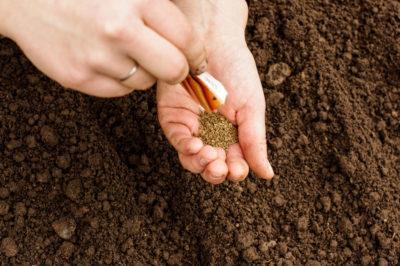

His leaves are spiky and dark green in color. The variety is characterized by resistance to cold and high yields. - Altaic... It has smooth and sharp leaves that grow on a straight rosette. The variety is resistant to low temperatures.
- Broadleaf... The leaves are large and have a sour and delicate taste. The advantage of the variety is its resistance to drought and heat, as well as its high yield.
- Lyons... The leaves are large, dense and wide. The variety is frost-resistant.
- Belleville... It has leaves of a slightly sour delicate taste. The variety is early and high-yielding. He is afraid of low temperatures.
Diseases and pests
Sorrel is quite resistant to various diseases and pests. Despite this, it is necessary to know the main dangers that can be encountered when growing it.
Occasionally, darkening with a grayish bloom can be seen on the inside of the leaves. This is how downy mildew manifests itself. The most effective means of combating it is spraying with 1% Bordeaux liquid.After this treatment, the shoots should not be eaten for at least 10 days.
Another ailment that can be encountered when growing is sorrel aphid. It sucks moisture out of the plant, the leaves deteriorate and dry out. It should be processed with an infusion of garlic, but only after the autumn pruning of the shoots. Aphids can be prevented by sprinkling ash on the soil from time to time.
Soil preparation
It is necessary to prepare the soil where sorrel seeds will be planted in spring with the onset of autumn. The selected place must be loosened by 10 cm, and burrowed, such a measure will allow unnecessary plants to germinate. A little trick is that with the onset of frost, the weeds will die, and next year the gardener will have fewer problems with weeding. For weeding and loosening the soil, we recommend using the Strizh self-sharpening cultivator.
Then the bed is fertilized with humus. The calculation, fertilization is as follows: for one square meter of soil, 5.5 - 6.1 kg will be needed. After a few days, another digging is carried out, deeper than the first. If you come across weed roots, it is recommended to remove them.
Before you start planting sorrel in the spring, it is necessary to thoroughly loosen the ground, add mineral fertilizing, among them there must be:
- ammonium nitrate - 20 - 30 g;
- potassium chloride - 10-15 g;
- humus, peat - 150 gr.
The most favorable time for planting is April. But many plant lovers know that sorrel tolerates frost well, which means that you can sow seeds much earlier.
Interesting fact. A very good harvest is obtained from early plantings, because the soil will contain a sufficient amount of moisture, which remains after the snow has melted.
Why is the plant useful: why is it worth planting on the site?
The cultivation of sorrel has become widespread due to the beneficial properties of the culture. The leaves and stems of the plant used for food have a rich composition, which includes mineral and fortified components. In particular, sorrel contains:
- carotene;
- antioxidants;
- flavonoids;
- essential oils.
The use of a product with a useful composition has a regenerating and healing effect on the human body. An additional advantage is that the plant has a low calorie content, therefore it is recommended to be included in the diet for people leading a healthy lifestyle.
Combining sorrel with other plants
Sorrel is considered a neutral plant, so it grows well in any neighborhood. But there are still recommendations for combining sorrel with other crops:
- Black currant. Sorrel grows well in the shade of its bushes. The currant benefits from such a neighborhood - its leaves become juicier and healthier, and the fruits acquire a pleasant aftertaste.
- Raspberries. Sorrel is placed along the perimeter of the raspberry tree. The strong roots of the sorrel prevent the roots from spreading throughout the garden. The shading from the raspberry tree is good for the sorrel - its leaves become brighter and juicier.
Sorrel has a beneficial effect on the yield of radish and carrots; its presence will not damage cabbage either. The plant also gets along well with garden strawberries, gooseberries, lettuce, mint, lemon balm.
Sorrel neighborhood with:
- spicy herbs;
- tomatoes;
- legumes.
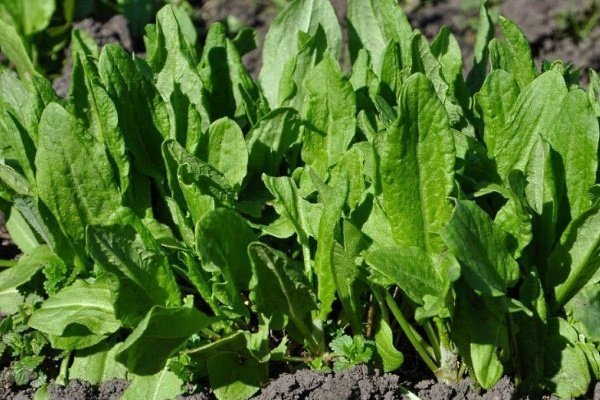

What can be cooked from sorrel
Sorrel cold soup: recipe with photo


Sorrel cold chill
The proportions of sorrel, water - by eye. It all depends on the number of eaters. About two to three medium bunches of sorrel leaves for 1.5-2 liters of water. 1 hard-boiled egg per serving (for 1 bowl of soup). That is, if you are cooking soup for three, then there should be three eggs.


Dip the sorrel into boiling water
Sort the leaves carefully, remove damaged or accidentally trapped weed leaves, rinse under running cold water to wash off the soil or sand.
You can chop the leaves or put them whole in boiling water if they are small. Boil for 1-2 minutes until the color changes. Then cool the broth. It can be kept in the refrigerator for several days.
Now that the broth is cooled to room temperature, we will refuel it. I usually prepare this soup just before serving. Sometimes I put the dressing not in a common pan, but in everyone's plate.
Finely chop green onions, dill.
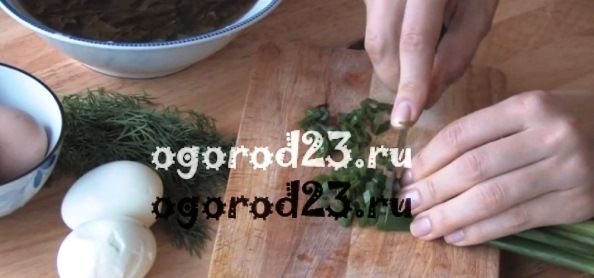

Add herbs to sorrel broth.


Chop hard-boiled eggs, add to the same.
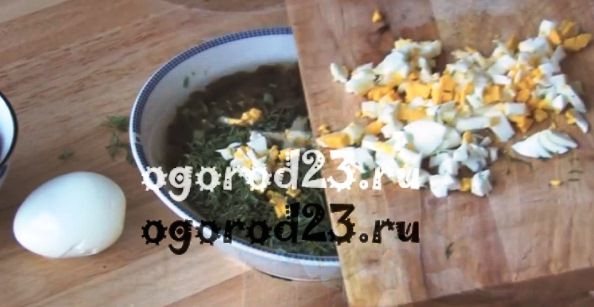

Season the soup with sour cream, salt to taste and stir well.
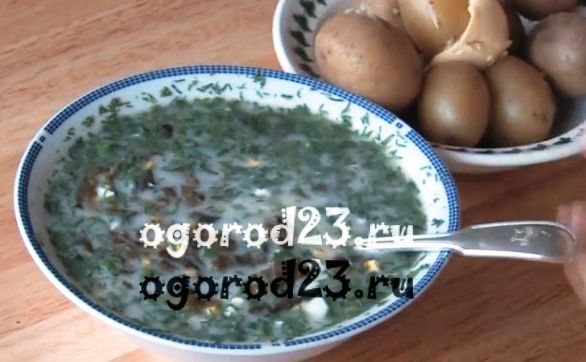

Jacket potatoes instead of bread
Our family serves such a cold sorrel soup with cold boiled potatoes in their uniforms. Soup with a bite with potatoes instead of bread. Delicious light dish!
Bon Appetit!
Why does the sorrel not sprout?
If sorrel seeds are of high quality, tested for germination, and for some reason the seedlings do not appear in the time indicated by agricultural technology, it is probably a matter of the depth of sowing. Many gardeners do not know that sorrel seeds cannot be buried more than 1 cm. The seeds of this culture are very small, sown deep, they simply cannot break through the layer of earth.
When sowing seeds, deep furrows are not made - it is enough, after holding a hoe, to make a small depression. Top the seeds are lightly sprinkled with earth.
Growing sorrel on a windowsill
In winter, to cook sorrel dishes, you can grow it on a windowsill or a glazed loggia, and you don't have to wait for spring. The main thing is to comply with certain conditions and rules.
Features of the
To obtain greenery, use the rhizomes of a 2-4 year old plant with a large number of buds, although you can sow it with seeds. The most successful in the conditions of an apartment are the Maikop, Altai and Odessa broadleaf varieties.
A slightly acidic, loamy, fertile soil is most suitable for growing a plant. It is better to buy it in the store so that the soil is guaranteed to be free of pathogens.
Harvesting rules
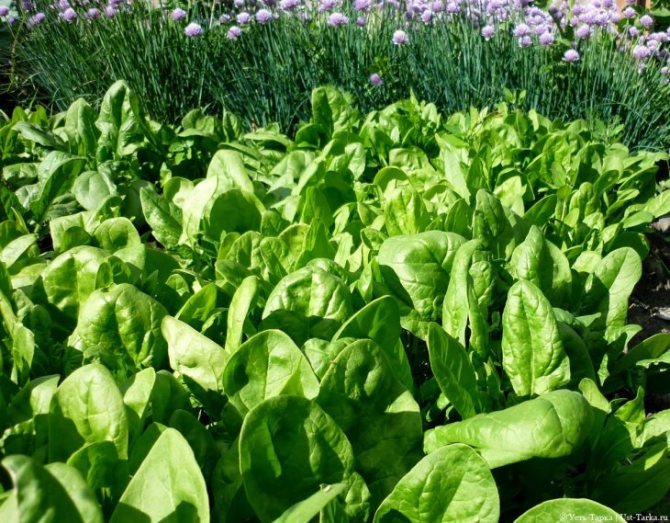

How to collect sorrel
When planting plants in spring, the first harvest is removed with the onset of summer. Green leaves are cut or torn off. If the leaves are medium in size, then it is recommended to leave them, in this case, the gardener will receive another harvest. The most favorable hours for harvesting are the first half of the day, in this time period, the leaves are more juicy.
Harvesting and storage
Harvesting begins when the leaves of the crop grow up to 10 cm in length. During the spring-summer period, it is possible to harvest several times. It is important not to allow the formation of peduncles, because because of this, the green part of the plants coarsens, and the taste characteristics deteriorate. Peduncles are left only if necessary to collect seeds, but from such a rosette the leaves are not eaten.
When harvesting sorrel, you need to properly cut the leaves at the lower base. Plucking greens can accidentally damage the stem and disrupt the process of further development. Harvesting crops in the country is carried out only in the spring or in the first half of summer, since then oxalic acid accumulates in the leaf plates, which negatively affects human health.
After each collection of greens, you need to loosen the ground, add ammonium nitrate as top dressing and water. Due to these agricultural techniques, sorrel will resume intensive growth of green mass and re-bring a good harvest.
The harvested sorrel crop is not subject to long-term storage. Having packaged greens in plastic bags, they are stored at a temperature of 1-2 degrees, so it will be possible to maintain freshness for 3-4 weeks. At room temperature, the shelf life does not exceed a couple of days.Plants can not be left for storage, but immediately used for processing. Before using the greenery, cut off the root area, divide the rosettes into separate leaves and rinse thoroughly. Yellowed, rotted and hardened sorrel leaves are not eaten.
Features and characteristics of the plant
Sour sorrel was introduced into the culture, it is also garden or ordinary (Rúmex acetósa), which belongs to herbaceous perennials from the buckwheat family. Forms a basal rosette of ovoid-oblong leaves, pointed at the end. Refers to monoecious plants with cross-pollination. It has a stem, branched root that penetrates deep into the soil.
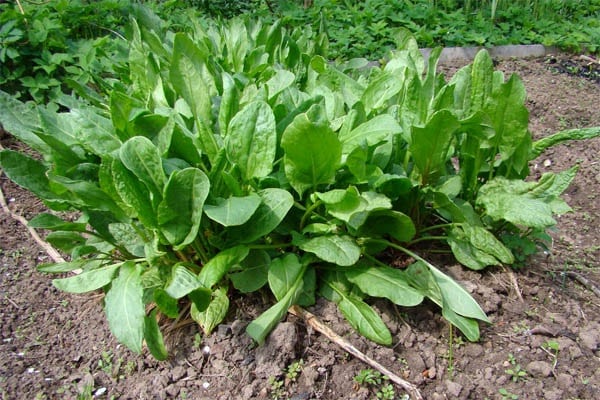

When flowering, sorrel throws out a flower stem up to 70 cm with small, reddish-yellow flowers, collected in a panicle inflorescence. The seeds are formed in the second year after sowing and are small triangular nuts. They ripen in late summer and are suitable for breeding.
Due to its high frost resistance, it feels great in the northern latitudes, where it winters well and gives green vitamin products in early spring. Even return frosts and temporary cold snaps are not terrible for him. Seeds are able to germinate as soon as the soil thaws, but the best germination energy is observed in warmed, moist soil.
Thanks to its unpretentiousness, the cultivation technique is quite simple. As with growing any vegetable crop, there are nuances, features and certain requirements that a plant makes for good growth.
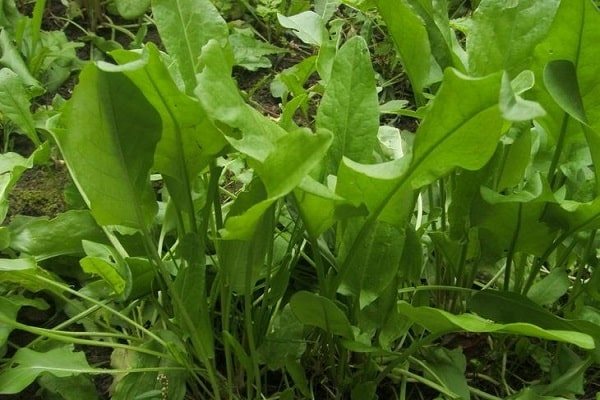

How to deal with pests
Sorrel is a fairly disease-resistant culture, nevertheless, it is still susceptible to some diseases.
So, sorrel can get sick:
- rust, in which you see yellowish or brown spots on the leaves, as a result of which they become ugly and unusable;
- aphids that make sorrel dull and dry. It is impossible to deal with chemicals with it, since the leaves will then become unusable and even dangerous. You can try to treat the leaves with ash dissolved in water, which should then be washed off as thoroughly as possible;
- caterpillars and beetles also eat sorrel, but you can fight them by watering the leaves with a solution of some caustic herb - for example, nettle, garlic or tomato;
- powdery mildew - in order to cure sorrel, it can be treated with Bordeaux liquid, but this should be done two weeks before cutting.
You need to start treating sorrel as soon as you see traces of the disease.
How to take care so that it rises quickly?
After the first shoots appear, plants need to be properly cared for. The first step is to thin out the sprouts as soon as they grow up.
There should be 10 cm between individual plants... If this condition is not met, the sorrel will stop growing or give weak, thin leaves.
In addition, caring for young plants is as follows:
- Removal of weeds... They interfere with the full growth of sorrel. Only the weeds are important to pull up, not pluck. After that, be sure to loosen the soil.
- Top dressing... It can be done by any means available. For this, both chemistry and organic matter are suitable. The latter option is less harmful, but no less effective. For young sprouts, fertilizing with humus and ash is best suited. This composition will contribute to the active growth of new leaves. From ready-made preparations, fertilizers with superphosphate, urea, potassium chloride or any nitrogen substances are suitable.
- Watering... It should be regular. Sorrel responds positively to water, so drought is not recommended. The soil must always remain moist. Use only warm and settled water.With insufficient watering, the plant will begin to throw out peduncles.
Growing sorrel from seeds in the country or in the garden is not difficult., but requires compliance with all recommendations for the processing of planting material and its further planting. Even a novice gardener can cope with the task. It is only important to choose seeds more carefully, trusting only trusted producers. And it is best not to be lazy and collect them with your own hands, in order to be sure of the result of the work done.

